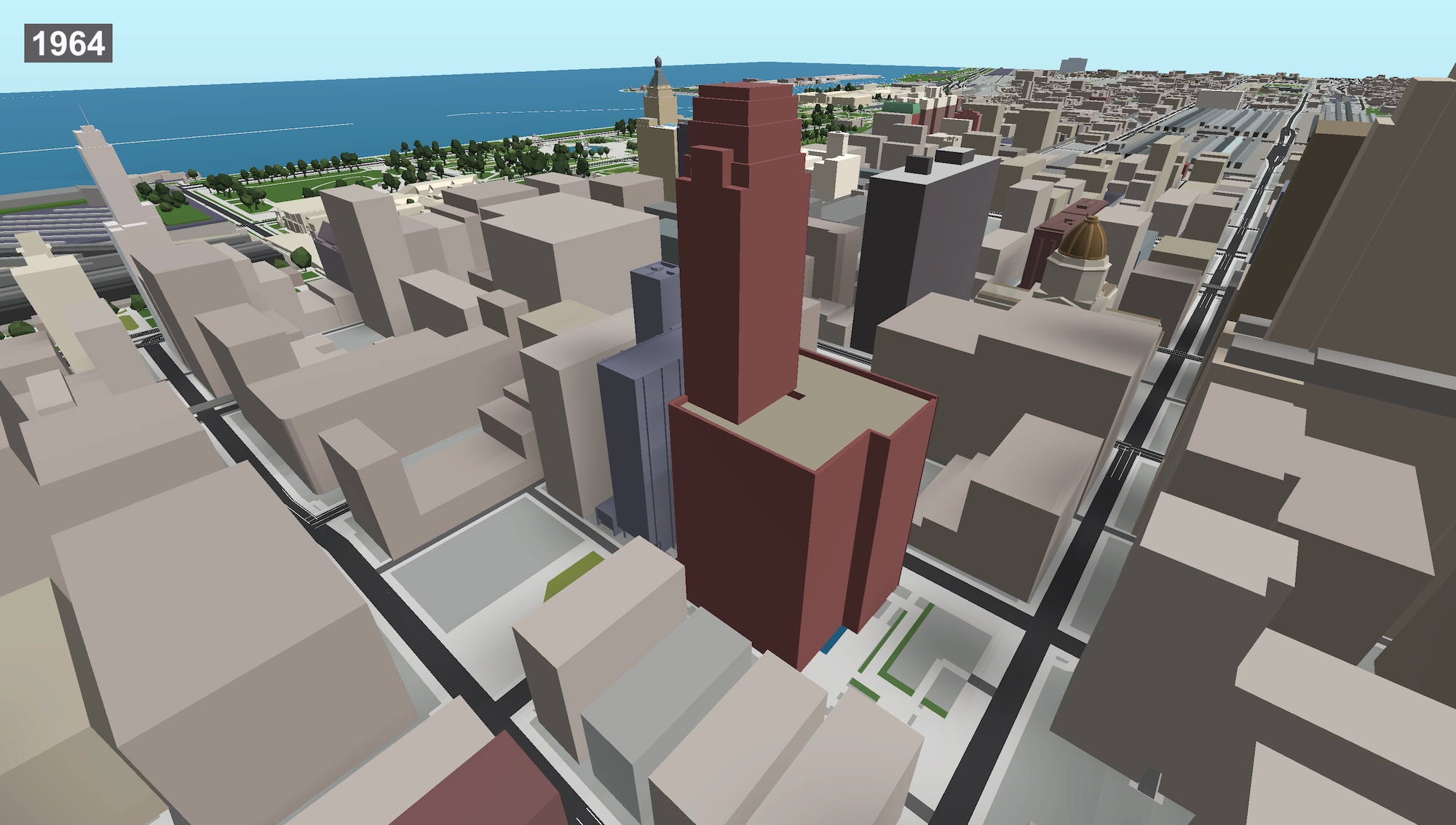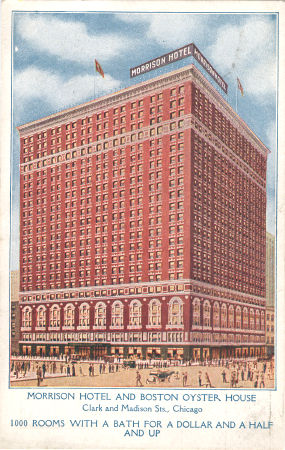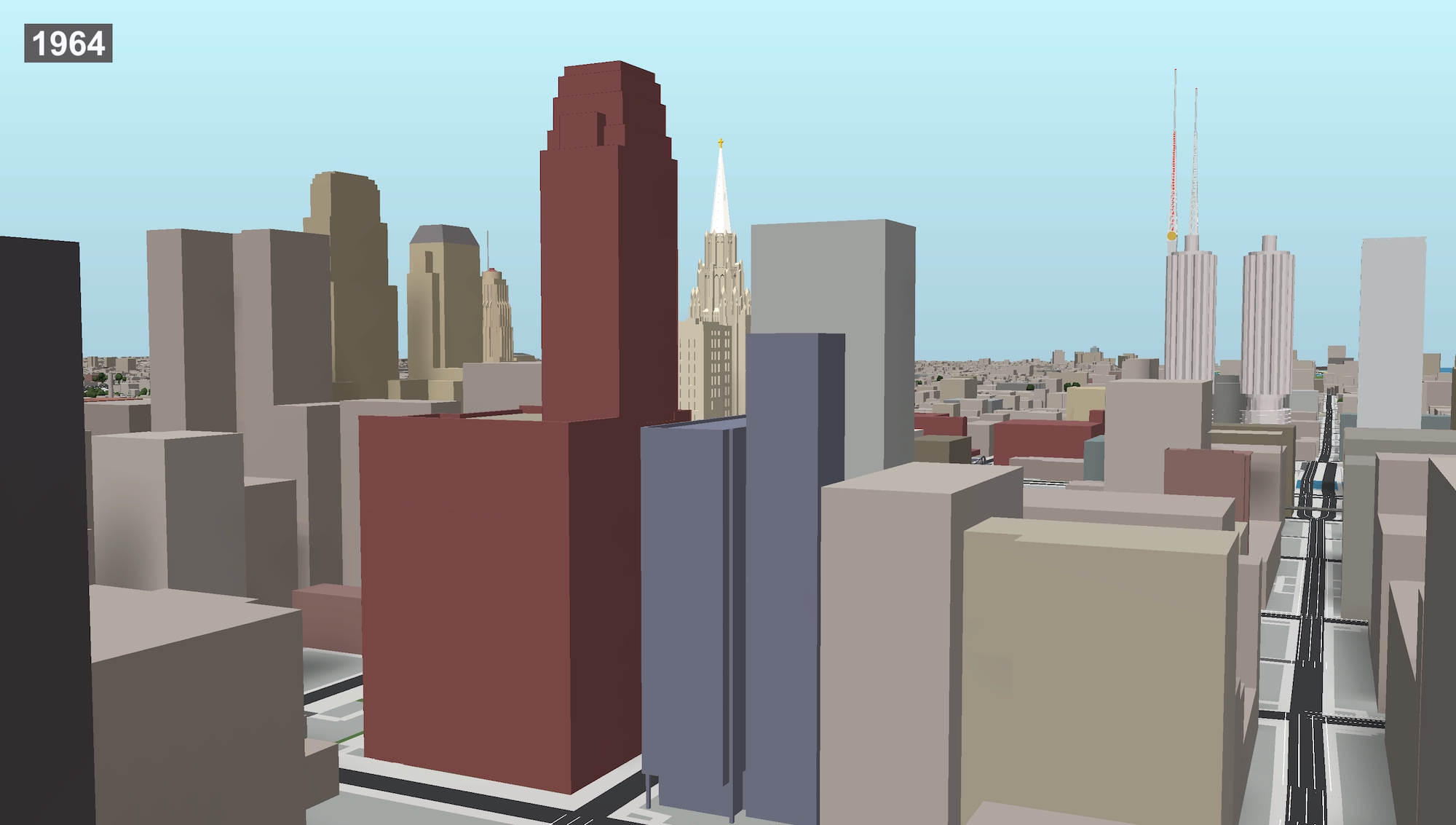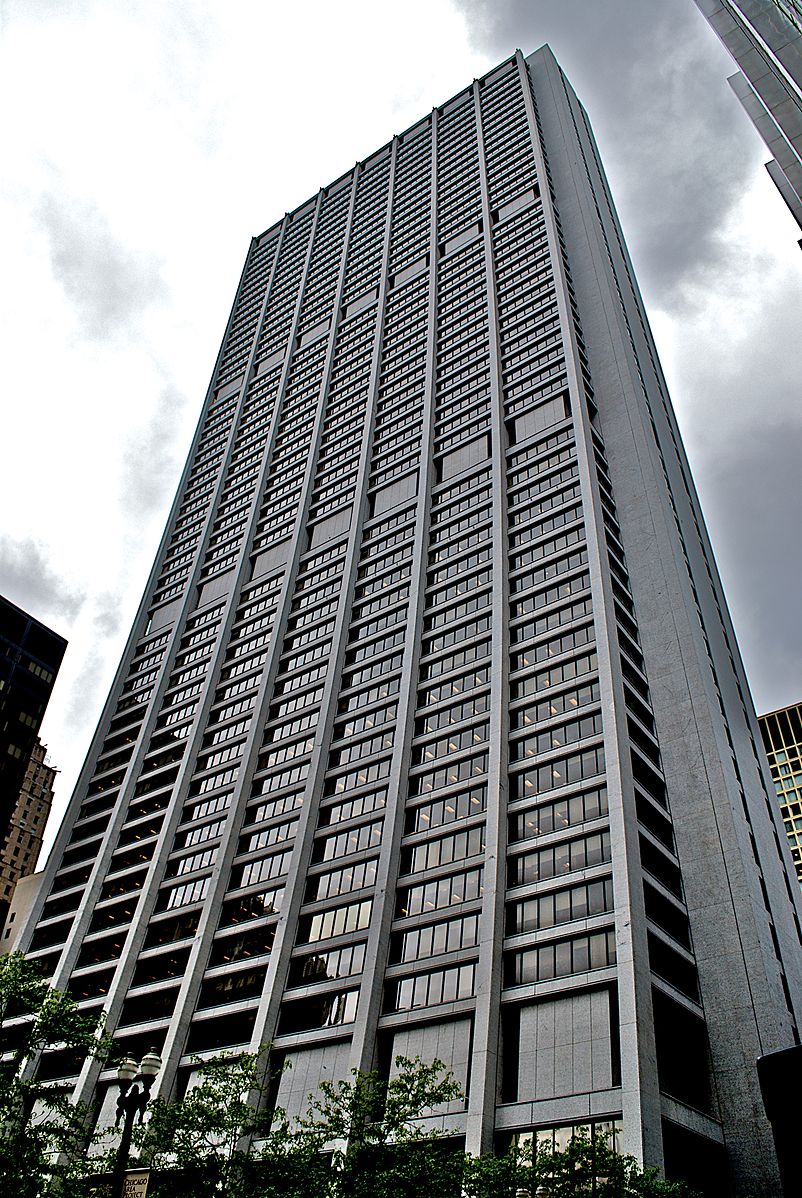
Morrison Hotel. Model by Jack Crawford / Rebar Radar
Welcome to the second part of our “Lost Legends” series, where we delve into the histories of some of Chicago’s iconic buildings and structures that no longer stand today. In this installment, we will discuss the Morrison Hotel, which was once a prominent edifice near the center of The Loop and one of the tallest buildings ever demolished. We will explore its design, historical significance, and the legacy it left behind.
Location and Design
The lodging establishment was named after Orsemus Morrison, Chicago’s inaugural coroner, who purchased the location in 1838. In 1860, he constructed a three-story building with 21 guest rooms. After the Great Chicago Fire of 1871, the original structure was replaced by an eight-story edifice. Harry C. Moir, who had acquired the property from Morrison’s nephew, commissioned architects Marshall and Fox in 1915 to create a 21-story, 500-room hotel. The hotel expanded by adding 650 rooms in 1918.

The Morrison Hotel as originally constructed prior to the tower expansion. Illustration via blancorincon.com
In 1925, the architectural firm Holabird & Roche undertook another expansion, building a 46-story tower. By 1931, the hotel boasted 1,800 rooms. Subsequently, a fourth section with 21 stories was added alongside the existing edifice, increasing the room count to 2,210. In 1952, a group of investors purchased the original establishment and carried out renovations.

Morrison Hotel (Center). Model by Jack Crawford / Rebar Radar

Morrison Hotel (right). Model by Jack Crawford / Rebar Radar

Lobby at the Morrison Hotel. Image via blancorincon.com

Terrace Garden Restaurant at the Morrison Hotel. Image via blancorincon.com
The ground floor of the building housed a spacious lobby with marble and decorative plasterwork, offering guests an inviting entrance into the hotel. Equipped with a ballroom, a rooftop garden, and a Turkish bath, the Morrison Hotel provided a range of amenities to its visitors. The hotel’s Terrace Casino was a popular spot for dining, dancing, and entertainment.
Historical Significance
The Morrison Hotel played an important role in the growth of Chicago’s hospitality industry. As one of the city’s early skyscrapers, it demonstrated the possibilities of vertical construction and efficient use of urban space. The hotel’s impressive height and luxurious offerings symbolized Chicago’s progress and development during the 1920s.

Morrison Hotel (Center). Model by Jack Crawford / Rebar Radar

Morrison Hotel (left). Model by Jack Crawford / Rebar Radar

Morrison Hotel via ArchDaily / Skyscraperpage.com
Throughout its existence, the Morrison Hotel welcomed many notable guests, including celebrities, politicians, and world leaders. It also served as a venue for social events, charity functions, and conventions, establishing its place in Chicago’s cultural history. Despite its storied past and it being a cosmopolitan epicenter, the hotel’s fate would eventually change.
Demolition and Legacy
By the 1950s, the Morrison Hotel began to show its age, and newer, more modern hotels started to outpace it. Although there were efforts to revitalize the hotel, it continued to face financial challenges. The hotel would ultimately be demolished in 1965, making it the world’s seventh tallest building to ever be intentionally demolished as of 2023.

Chase Tower. Photo by Monika Thorpe via Flickr
The site is now occupied by the Chase Tower (formerly First National Bank of Chicago), a modernist skyscraper designed by C.F. Murphy Associates and Perkins + Will that was completed in 1969. Even though the Morrison Hotel is no longer a part of Chicago’s skyline, its memory is preserved through stories, photographs, and memorabilia that document its history. It serves as a reminder of the city’s evolving architectural landscape and the significance of preserving architectural heritage for future generations to appreciate.
As for those who wish to explore the 1960-2033 Timelapse model themselves, check out the enthusiast tier at rebarradar.com. This feature will soon be available to free users covering the years 1960-2023.
Subscribe to YIMBY’s daily e-mail
Follow YIMBYgram for real-time photo updates
Like YIMBY on Facebook
Follow YIMBY’s Twitter for the latest in YIMBYnews


The now named Chase Tower was the First National Bank of Chicago. An elegant and beautifully designed building. Spacious, soaring bank lobbies and beautiful materials made this a very special place. It has been destroyed by Chase. Divided up into annoying, unsightly spaces with no visual impact. Sad.
Great piece, but you have the building positioned incorrectly in your model. The tower side of the hotel faced Clark, not Dearborn. In the ArchDaily image above, the camera is facing south — Madison is in the foreground, Dearborn is at left, and Clark is at right (note the Inland Steel Building to the left side of the image). Note also the historic postcard images that give the address as “Clark and Madison” (not Dearborn and Monroe as the model has it)
No loss, in my opinion. It lacked the material robustness of the late-19th-Century greats in the Loop, and the tower addition is graceless. Chase building is a worthy replacement for the site.
Loving the Lost Legends series. Thanks for including the vintage postcards of the exterior and interior.
We found an old letter with the morrison hotel chicago letterhead inside the walls of the home we just purchased. Where do I send it to be scanned at its history preserved?
I also have an old letter on Morrison Hotel letterhead and the envelope is dated July 12, 1949. James MacCahey was president, and it’s signed by someone in the Convention Department. Would someone want to add this to an archive?